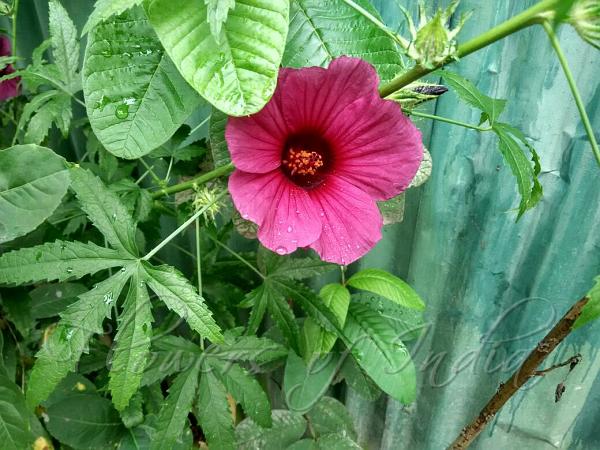|
| Kenaf |
|

|

|
|
|
|
Photo: |
Botanical name: Hibiscus cannabinus Family: Malvaceae (Mallow family)
Kenaf is a species of Hibiscus, probably native to southern Asia,
though its exact natural origin is unknown. The name also applies to the
fibre obtained from this plant. Kenaf is one of the allied fibres of jute
and shows similar characteristics. It is an annual or biennial herbaceous
plant (rarely a short-lived perennial) growing to 1.5-3.5 m tall with a
woody base. The stems are 1-2 cm diameter, often but not always branched.
The leaves are 10-15 cm long, variable in shape, with leaves near the base
of the stems being deeply lobed with 3-7 lobes, while leaves near the top
of the stem are shallowly lobed or unlobed lanceshaped. The flowers are 8-15
cm diameter, white, yellow, or purple; when white or yellow, the centre is
still dark purple. The fruit is a capsule 2 cm diameter, containing several
seeds. The leaves are cooked and eaten in Manipur, and are called
sougri.
| Identification credit: Thangjam Hindustani | Photographed in Imphal, Manipur. |
• Is this flower misidentified? If yes,